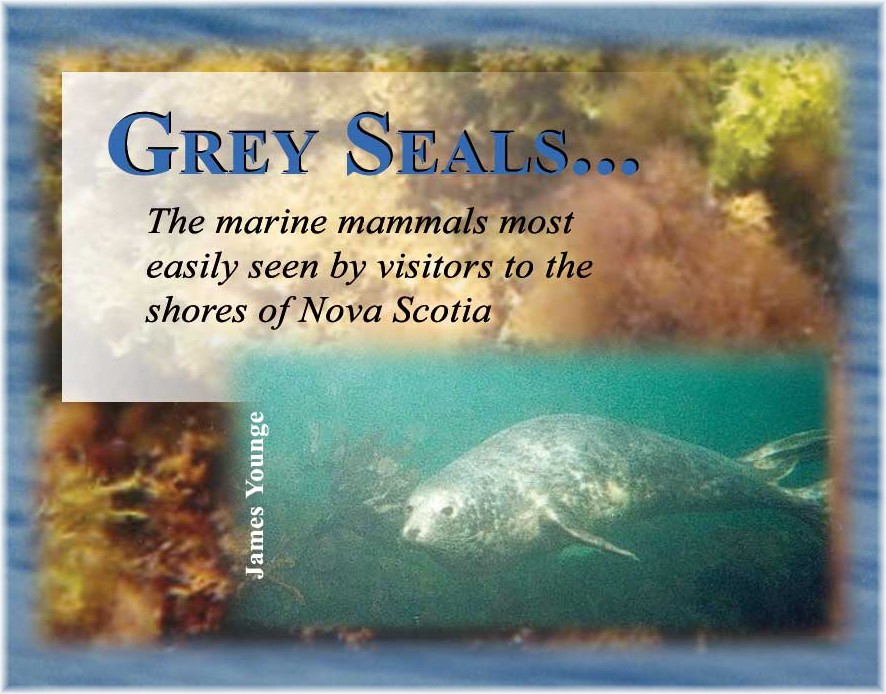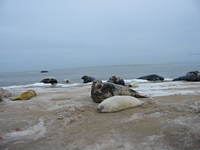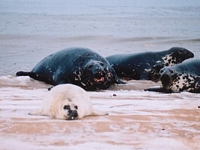Seals are by nature-aquatic animals. As a whole, these warm-blooded "oxygen breathers" are lively swimmers with great sprightliness. Their streamlined shape allows them to be extraordinarily graceful in the water and with combined attributes of strength, flexibility and unique physiology, it is not difficult to feel some "respect and admiration" towards these distinguished mammals...whose features are perfectly designed for life in the ocean realm.
On land, maneuverability is awkward for seals...by no means are these sea mammals supple and "light-flippered" outside their respective marine environments. Surprisingly though, for this suggested clumsiness - they do manage to amble along relatively well over rugged coastal rocks, irregular shaped ice flows and wind sweep sand dunes. When seals begin to come ashore, specific rules govern the functioning of a seal whelping colony and from the onset, these interactive protocols are strictly binding.
For the here and now, an "antiquated formula" spills over from the past - propelling ahead, the eagerness of burgeoning new life...
It is fascinating to watch a females behavior as she exercises domination over the breeding grounds - her full attention is focused on protecting and nurturing her newborn. This is a critical time for a young pup and mother, because "failure to bond" will unfortunately result in the "stress of starvation" for the young seal pup. As the whelping beaches become alive with the energy of "animate life" - strong interplay's between "Romeo" males and "Juliet" females begin to intensify...here also, increased competition between revival males is visually apparent, but socially amicable.
For the most part, "Romeo" males on Melmerby Beach remained in the shallow waters along the shore line. Polygamy is a characteristic associated with male grey seals. Therefore dominant "horsehead" males, by size advantage alone, can easily defend a territory against lesser males of smaller stature. Interestingly, females and males do not feed during the whelping period, so a larger male with greater energy provisions would have a definite advantage as he competes for an opportunity to mate...this too, simultaneously ensures that through the "process of selectivity" - that only predominant genes are passed along.
After bearing young, females occasionally react aggressively towards advancing males - it has been suggested that this may indirectly encourage male competition...oestrus is a time of inflamed excitement - this subtle scent is unmistakably a driving force that perpetuates Romeo's impassions towards a receptive female. This motivation is solely controlled by natural laws and curious how "Romeo" males have no interest in devoting time to the young pup. As a result, shortly after the enamoured affections of procreation, the newborn seals are left alone to fend for themselves...






